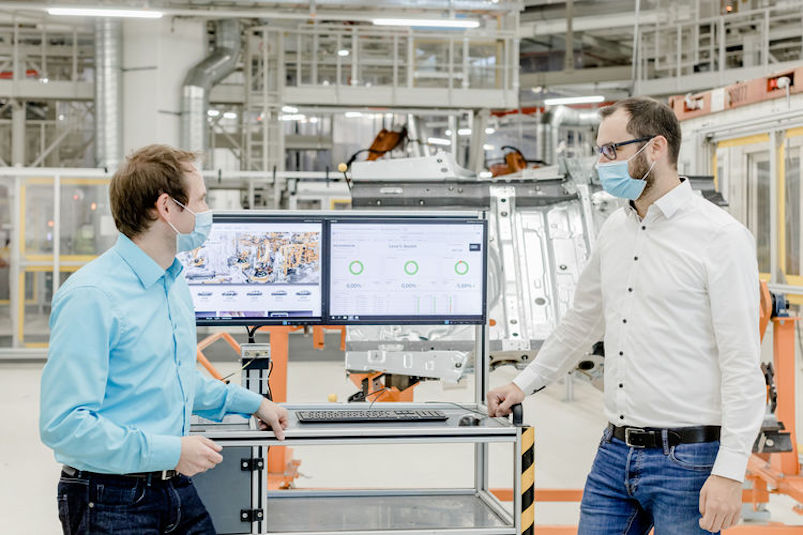 Audi enhancing quality control of spot welds in car body manufacturing using artificial intelligence
Audi enhancing quality control of spot welds in car body manufacturing using artificial intelligence
“WPS Analytics” pilot project being conducted within the framework of the Volkswagen Group’s Industrial Cloud
Michael Haeffner: “AI important key area of expertise to make Audi fit for the future”
A pilot project being conducted at Audi’s Neckarsulm site is using artificial intelligence to control the quality of spot welds in high-volume production. The solution is being advanced together with Siemens and Amazon Web Services as part of the Volkswagen Group’s Industrial Cloud, and is set to be rolled out at other locations.
Around 5,300 spot welds are required to join the parts that make up the body of an Audi A6. Up until now, production staff use ultrasound to manually monitor the quality of resistance spot welding (abbreviated WPS in German) processes on the basis of random analyses.
However, experts from the fields of manufacturing, innovation management, digitalization planning, and IT are currently testing a much smarter way of determining the quality of spot welds at the Neckarsulm site.
As part of the “WPS Analytics” pilot project, the team led by Mathias Mayer and Andreas Rieker is using artificial intelligence (AI) to detect quality anomalies automatically and in real time.
Michael Haeffner, Head of Delivery Management Digitalization for Production and Logistics at AUDI AG, is satisfied with the projects at the site: “As a pilot plant for digital production and logistics at the Volkswagen Group, our goal is to test and develop digital solutions for vehicle manufacturing right through to their use in series production. With the use of AI, we are testing an important key technology here that will make Audi and the location fit for the future.”
The underlying algorithm, its graphical user interface (dashboard), and an application for more in-depth quality analyses are currently being piloted in Audi A6/A7 car body manufacturing at the Neckarsulm site.
The aim of the project is for the algorithm to evaluate close to 100 percent of the set welding points during body manufacturing in the future. The long-term vision is that in the future, the quality of welding processes can be controlled automatically and continuously optimized.
Mathias Mayer has already been working on the use of AI in Audi production for five years and views the use of “WPS Analytics” as an exciting opportunity: “The algorithm serves as a blueprint for further applications in connected manufacturing. In addition, it allows us to make advancements to existing digital solutions, such as predictive maintenance.”
Rollout of the solution planned across the Volkswagen Group
Audi is taking the lead in advancing this promising use case as part of the Volkswagen Group’s Industrial Cloud. This system brings together production data from the group’s factories around the world in a single, powerful digital platform.
The primary objective is to increase efficiency and cut costs. Each connected site can download applications for its machines, tools, and systems directly from the Industrial Cloud (similar to an app store) and thereby manufacture its products even more efficiently.
Once the “WPS Analytics” algorithm and dashboard have been successfully deployed in Neckarsulm, the plan is to roll them out to numerous factories across the group.
The first synergies have already been achieved, as colleagues at the Volkswagen factory in Emden are also relying on algorithm-controlled optimization for resistance spot welding – with the lessons learned from both projects flowing into the Industrial Cloud across all sites.
Another application that uses an algorithm to make processes in Audi production more efficient is scheduled to be deployed in series production at the Ingolstadt press plant at the beginning of next year – in this case, artificial intelligence will be used to detect quality defects such as small cracks in the car body.
This project also serves as a use case for the Automotive Initiative 2025 (AI25). Audi’s ultimate goal is to make production and logistics more flexible and efficient through digitalization. Innovative technologies are already helping employees and relieving them of strenuous physical tasks and monotonous manual tasks.



































